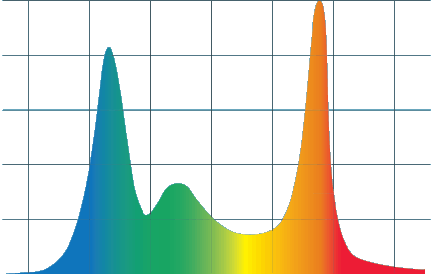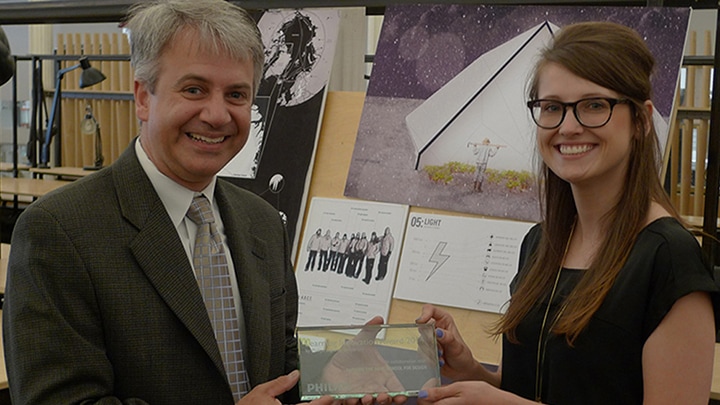Our understanding of how color is perceived and measured has changed over time, based on new discoveries, new color models, and evolving light sources. As with any disruptive digital technology, the introduction and market dominance of LED lighting renders many of the old ways of thinking about color obsolete. It also introduces extraordinary new capabilities, exciting opportunities, and new applications that were unthinkable, unaffordable, or impossible just a decade ago.
But the move to LED technology also creates confusion. Lighting professionals now have to deal with new underlying approaches to color that go beyond the familiar RGB—including RGBA, RGBW, and other multi-channel luminaires. They have to stay in sync with evolving standards. And they have to choose from a broad array of system components—including luminaires, controllers, and sensors.
As a visionary that helped lead the LED lighting revolution, Philips has a unique perspective on color science and deep knowledge of all aspects of lighting. We created Color Matters to provide lighting professionals of all types with a brief, easy-to-read guide that delivers:

Traditional color science created a rational way for lighting designers and other to quantify the light output and describe specific color qualities of conventional incandescent lighting sources. CCT, CRI, and other measurements served as an accurate paradigm for defining light within that context. But as we’ve seen, the old standards are not ideal for the LED world. The accepted standards and their associated terminology will not go away (at least immediately) but will be supplemented by other, more precise ways of quantifying color—and differentiating between different light sources.
As it often does, digital disruption (LED lighting) has inspired a parallel effort toward standardization. At some point in the future, our industry will adopt a standardized way of evaluating light source color rendition.
Groundbreaking efforts, including Color Quality Scale (CQS), Gamut Area Index (GAI)—and now IES’s TM-30—can be seen as important steps toward the goal of standardization. But the day-to-day reality for today’s lighting professionals is that they have many alternatives available when choosing how to achieve their creative vision. Knowing these alternatives—and their particular strengths—is critical.
Lighting design is all about choices.
For lighting designers, the initial choice is between the three main varieties of light—white, color, or color-changing effects. This choice then leads to a second level of decisions—what type of light source to use to create that light. Before choosing a specific luminaire, form factor, or vendor, lighting professionals face a core decision about what type of light source will work best for their application.
Much of LED color science focuses on bringing consistency to LED lighting. Without consistency, lighting professionals cannot rely on the quality and specific output of the luminaires they select. And larger implementations can show variations between luminaires. To address these needs, Philips Color Kinetics has developed key lighting technologies that set new standards for consistency. These technologies work together to deliver the ever-escalating levels of accuracy, precision, and consistency required by innovative tuned white, color, and dynamic color applications.
Meticulous LED selection for maximum consistency
Optibin begins the color consistency process by grouping (or binning) LEDs by flux as well as CCT for white and center wavelength for color LEDs. This proprietary binning optimization process uses an advanced bin selection formula that exceeds industry standards for chromaticity to ensure uniformity and consistency of hue and color temperature for Philips lighting products.
Color precision and consistency
Chromasync provides advanced color consistency for dynamic color LED lighting applications. Chromasync is available on all Philips Color Kinetics IntelliHue LED Lighting Systems (and some RGB, RGBW, and RGBA luminaires), enabling them to achieve color consistency. Chromasync’s integration into Philips Color Kinetics LED lighting systems is ongoing.
Advanced color control and mixing
This advanced approach to color control and mixing that produces an enhanced spectrum of precisely controllable light, including millions of saturated colors, pastels, and precisely controllable, high-quality white and tinted white light. By combining carefully selected channels of LED light sources, IntelliHue enables high-quality dynamic color and white light from the same luminaire.
Lighting has evolved extensively in the last decade, thanks to the advent and advancement of LED technology. And there’s more change ahead as new solutions hit the market, and lighting professionals continue to explore the art and science of their profession. New options. New opportunities.
New ways to make an impact, indoors and outdoors. And even more in the future.
Knowing the core color science behind lighting is an ongoing effort, and one that Philips Color Kinetics is glad to share with our many customers throughout the world.

White papers
Signify white papers are documents produced by Signify to share valuable information with you about all kinds of subjects that are important to share and publish for the lighting industry.

The evolution of light
This eBook includes a study on the influence of Chinese culture on modern-day lighting.

Lighting design award
Parsons graduate Dagmara Nowak was named the recipient of the Signify Learning Innovation Award at the school’s commencement ceremony in May, 2014.